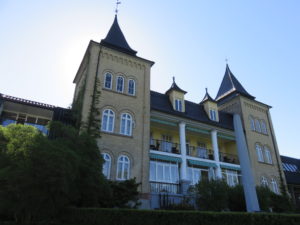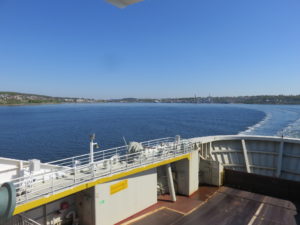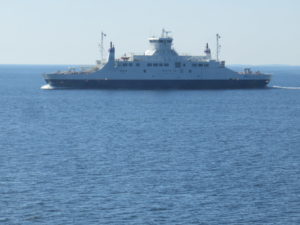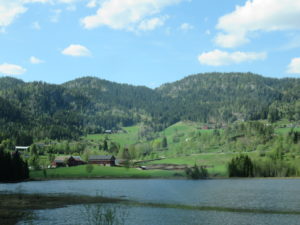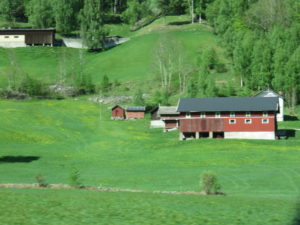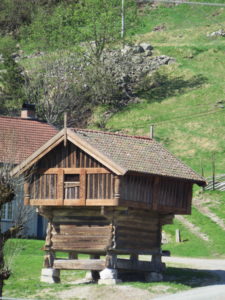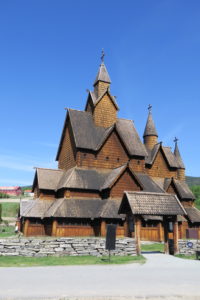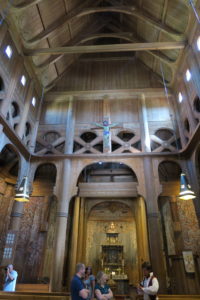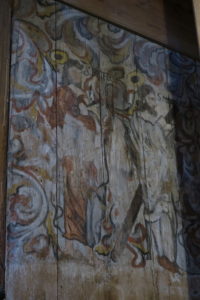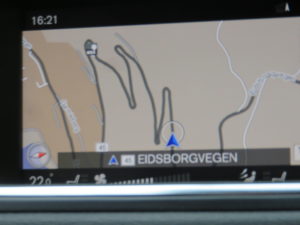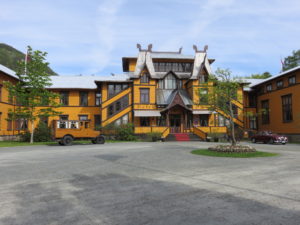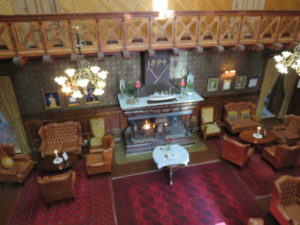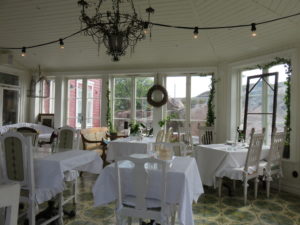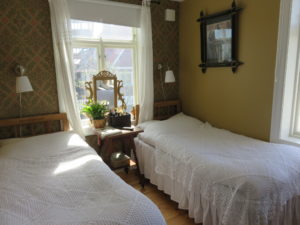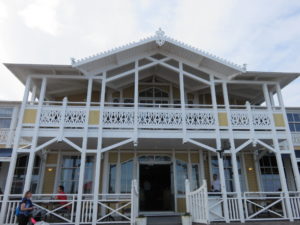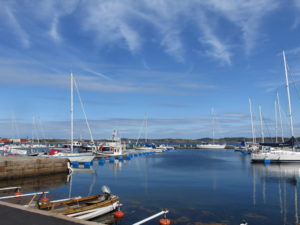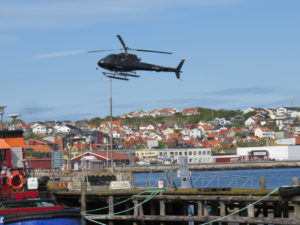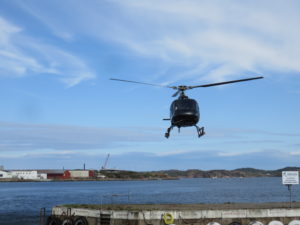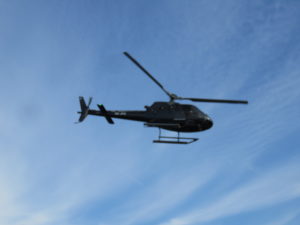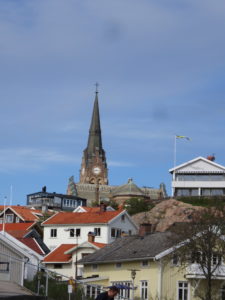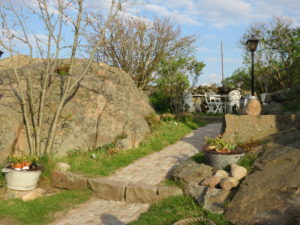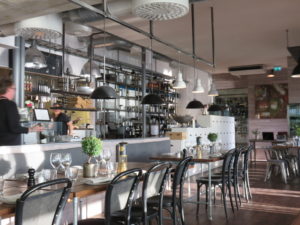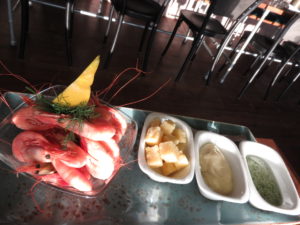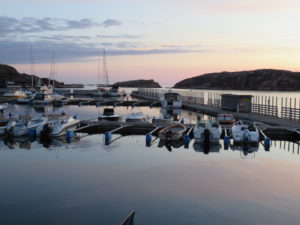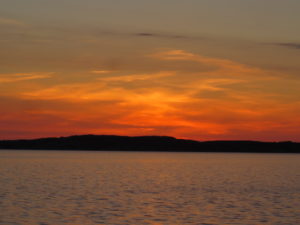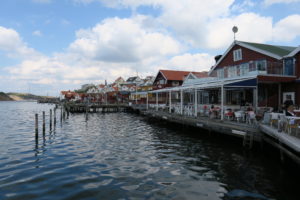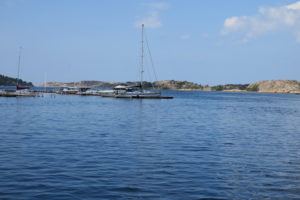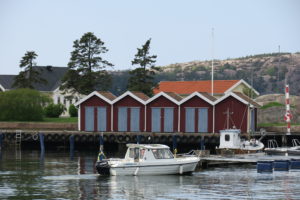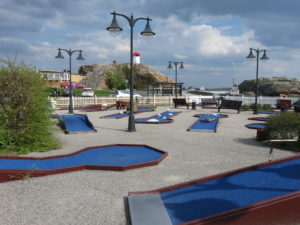At dinner Monday night, there were only a few tables of us in the hotel dining room. The hotel had only been open a couple weeks, and guests were few and far between.
Late during dinner service, a man came into the dining room. He was greeted warmly by one table. After talking with those people, he moved on to the next table and welcomed those folks. Then it was our turn. I thought it likely he was the hotel manager. He regaled us with history of the hotel. Our food was getting cold, so he said he’d like to tell us more after dinner. Our timing and his seemed to be off for that to happen, so he later suggested he would try to catch us in the morning.
Sure enough, the man turned up at our breakfast table Tuesday morning, asking what we planned to do that day. We told him our primary purpose in coming to this area was to see the Telemark Canal. This comment brought him to life. He was so excited that we wanted to see this thing that, we learned, is his passion.
===============
Side note: The Telemark Canal runs from the town of Skien to Dalen, where we were staying—a distance of 105km. It traverses 4 lakes and 8 locks and was completed in 1891. (Our hotel was built in 1894 to take advantage of the canal traffic.) All but one of the locks are manually operated. About 25 years ago, the canal won an award for its restoration, which has made it quite an attraction.
===============
Our friend informed us that the canal was officially opening for the season on Friday. Wow! Too bad that information didn’t appear in our internet searches. The wooden boat, the Henrik Ibsen, would set sail Friday morning in Skien and arrive in Dalen early Friday evening. But we were leaving the area Friday morning.
The man could see how disappointed I was. He said we could see a lot of it, enjoy a scenic drive, see some of the locks, and make quite a day of it. He ended up spending quite a bit of time with us and carefully outlined our route on his phone so that I could see where we were to zig and zag. This was way more detailed than my map allowed. Without his directions and our trusty navigation system, we would have missed a lot of our canal “tour.”
So off we went, in search of the Telemark Canal. We took a set of nasty switchbacks up out of the other side of the valley. Breathtaking—and I’m not referring to the scenery. We drove along a pretty lake that was smooth as glass.
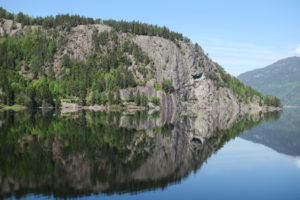
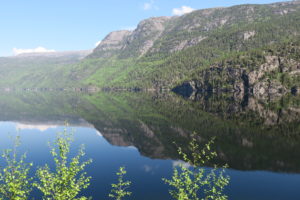
Then we went down another set of switchbacks to allow us to drive along two more lakes that form a part of the canal. This road was incredibly narrow and curvy and hair-raising. I think we were both holding our breath more often than we were breathing, but I can’t be sure of that. It was uncommonly beautiful, and we were lucky to have a clear, sunny day.
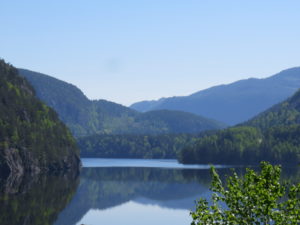
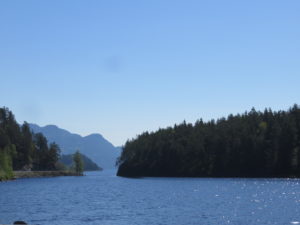
We saw our first locks near the town of Lunde.

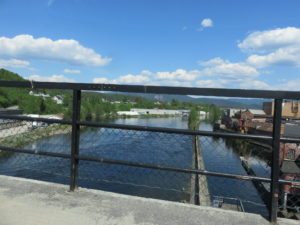
Some segments of the canal.

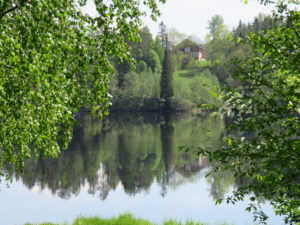
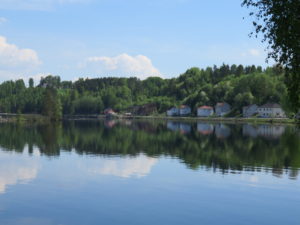
Then we had some pretty intricate directions to take us to the locks that make the Telemark Canal notable. We drove something that reminded us of a cow path more than a numbered road. This was one of the gnarliest driving stretches we’ve ever done—and, remember, we did 4 weeks of driving the Wild Atlantic Way in Ireland a few years ago that I hold accountable for the bulk of the white hairs on my head. We could not get done with this particular section soon enough, and I promised Jerry that, no matter what, I would figure out a different route back to our hotel. We were not doing this drive in reverse for double the pleasure.
We did find our way to the very interesting Vrangfoss locks. Six stair-step locks bypass a 75-foot waterfall now used for power production. It would have been more fun to see a boat coming down the locks, but it was fun to see nonetheless. After the switchbacks and roads we had driven to get to this place and time, the least we could do was get out and walk along it and steep ourselves in it.
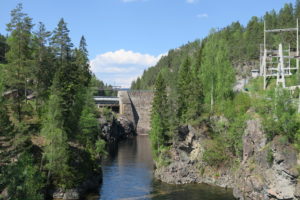

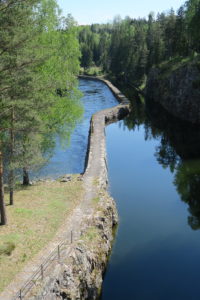
But then my challenge was to get us back to the hotel without the nightmare of the roads on which we had arrived. I managed to get us on a road that had two lanes and we eventually returned to Dalen on the same set of switchbacks by which we had arrived the day before. Hey, one set of switchbacks is better than two, trust me! And having two lanes for about two-thirds of our return was lots better than having nothing but the smaller roads.
On our way to dinner, we ran into our new friend, who by now I knew was Thor Halvorsen, the owner of the Dalen Hotel and the Henrik Ibsen canal boat. He was leaving to return to Skien so that he could be aboard the Henrik Ibsen when it set sail on the canal Friday morning, and he wanted to wish us a good rest of our trip. We were able to happily report our success with the canal mission, especially finding our way to Vrangfoss. I told him there was no way we would have found it without his careful instructions. He seemed very pleased.
Since Thursday was 17 Mai, Norway’s Constitution Day and a really big deal all over the country, Thor asked what we were doing to celebrate and mentioned a local parade. He encouraged us to participate in the local festivities, but wasn’t sure of the times and details. A short time later, he arrived with a printout of the times for parades and speeches, etc., for each of the handful of nearby communities. Since it was all in Norwegian, he carefully translated it, so we could decide what to see and do. Along with this information, he brought us a copy of the book he had published about the history of the hotel, including his acquisition and restoration. He had inscribed and signed the book and gave it to us as a gift. What a nice gesture!
Thursday, Syttende Mai (17 May), arrived. The hotel was flying the Norwegian flag.
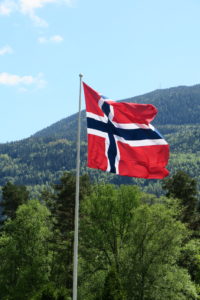
After breakfast, we took a walk along the lake then made our way to where we thought the parade was going to start. Since there was not a soul in that area, we headed the other direction in town until we saw a few people starting to gather. Everyone was dressed as if they were going to a wedding. Suits, dresses and heels. Then we started to see more and more people arriving in regional dress.
Finally, we heard some drums and music. Here comes the parade!

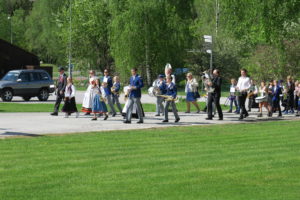

The hotel was abuzz with groups of people in regional dress until sundown. I had initially thought we should try to be in Oslo for this special holiday. But the crowds there are legendary—hundreds of thousands of people on the main boulevard to the palace, and the revelry goes on at a loud pitch all day and night. Having now experienced our Dalen celebrations, we know it was a real treat to be in a small community and get a sense of their Norwegian heritage. We also later learned that Telemark is more traditional than some other areas, so we probably got to see a more authentic expression of their national pride. The flags, the singing of the national anthem. It doesn’t get much more special than that.
Beautiful Lake Bandak, where our hotel was located, and the endpoint of the Telemark Canal.

